Last Updated on March 18, 2023 by Amanda P. Brown
Maintaining the bright eyes, lustrous coat, and Boxer-Esque muscles of a Boxer dog requires a varied organic diet and a healthy, well-balanced diet. Vegetables have a crucial function in this context. Several types of cruciferous vegetables benefit your boxer dog’s health due to the high quantities of essential components they contain. These components include enzymes, minerals, phytonutrients, and antioxidants.
Also, vegetables can complement your dog’s nutritional needs while staying within your budget. For this, I’ve provided a list of What Vegetables Can Boxer Dogs Eat? In the below. Read on.
Why Should I Give Vegetables to My Boxers?
Table of Contents
Many vitamins and minerals that a dog may require can be found in vegetables. When planning a balanced diet for your boxer dog, it’s crucial to include plenty of fresh veggies. Vegetables assist your boxers in maintaining healthy bones, muscles, eyesight, weight, cardiovascular fitness, and illness prevention.
Vegetables for a boxer can be prepared in various ways, including slicing, chopping, boiling, and cooking. If your Boxer has trouble digesting greens, get in touch with your vet.
What Vegetables Can Boxer Dogs Eat?
- Carrots
- Celery
- Kale
- Sweet Potatoes
- Spinach
- Butternut Squash
- Green Beans
- Beets
- Cucumber
- Broccoli
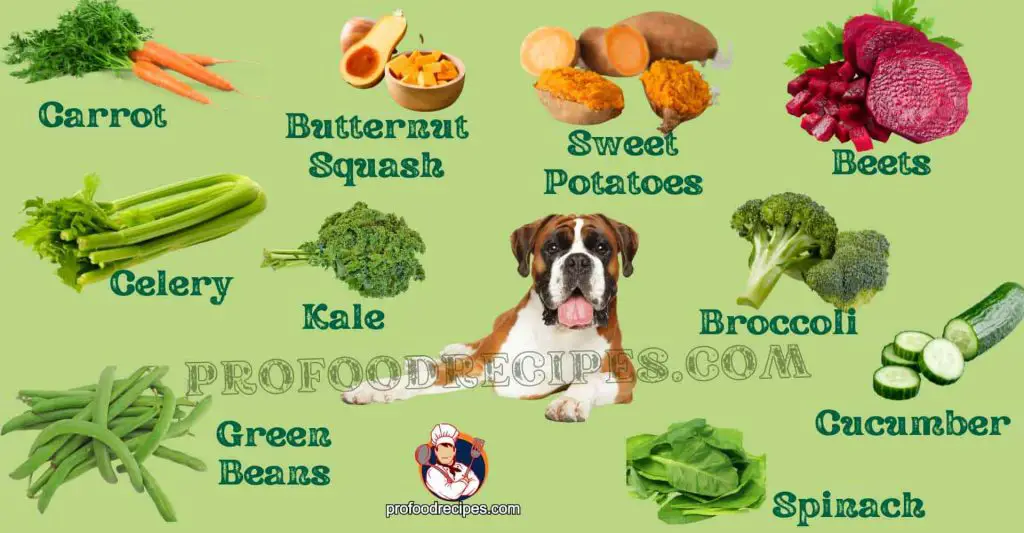
1. Carrots
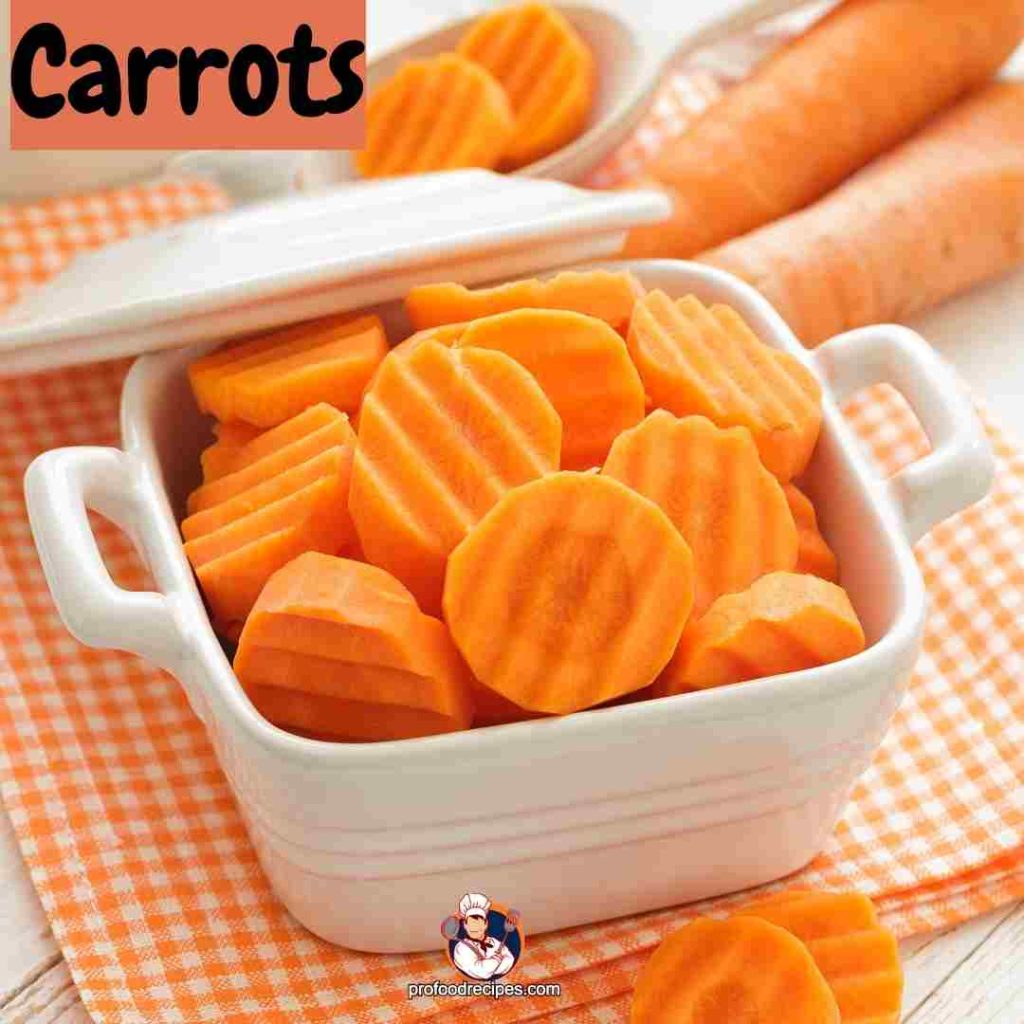
One of the low-calorie veggies that your Boxer can enjoy is carrots. Like other whole foods, such as fruits and vegetables, they have sugars that exist in nature.
Carrots have been shown to prevent sickness, improve eyesight, and promote skin and coat health. However, it’s fine to occasionally include it in their diet as a reward rather than as a staple.
Feeding Amount: You can provide it to your dog raw, cooked, or cut into small pieces. 2 or 3 small carrots each day is fine if you’re making a vegetable diet for boxers.
2. Celery
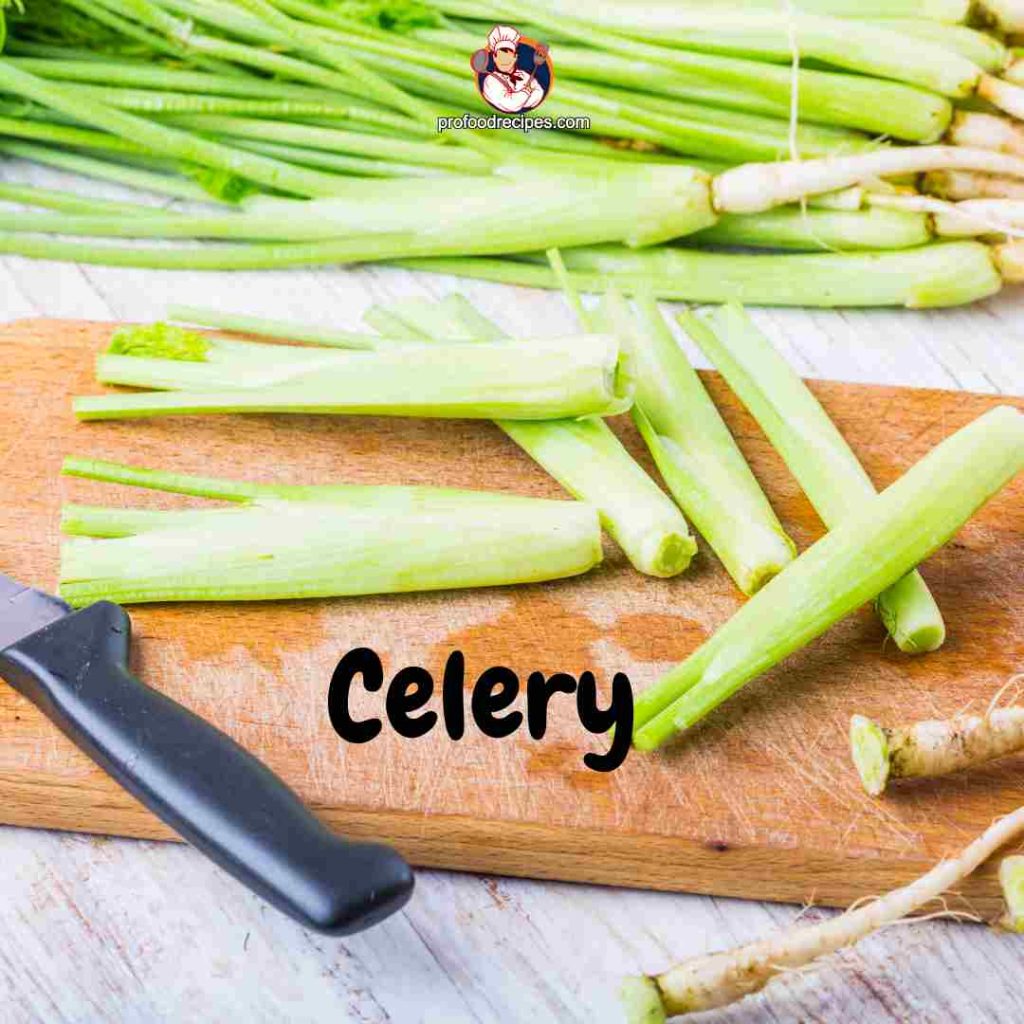
The antioxidant vitamins C, A, manganese, potassium, and folate are abundant in celery, and vegetable is also a good source of fiber. Due to its low fat and cholesterol content, it is a great addition to your Boxer’s diet.
Feeding Amount: While the exact amount depends on your dog’s size and reaction to the vegetable, a small handful of bite-sized pieces should be fine.
3. Kale
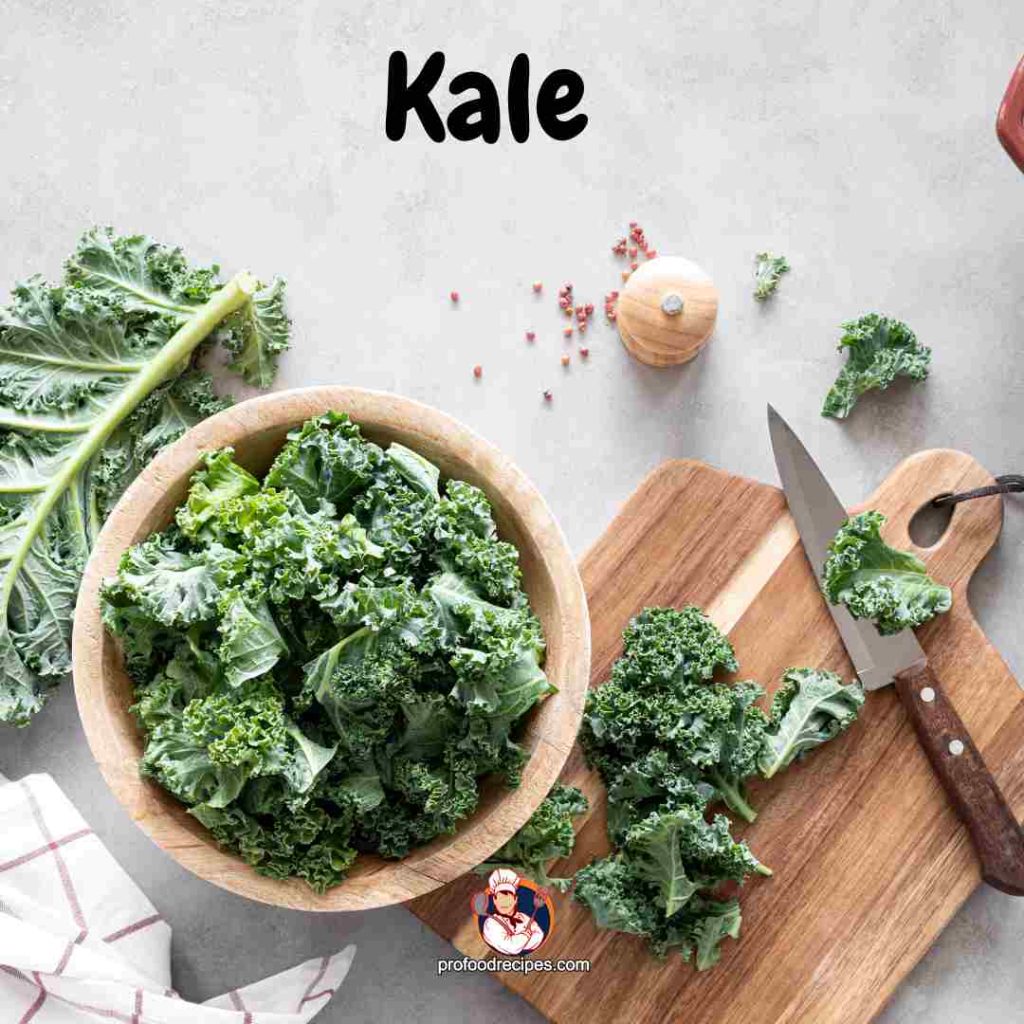
Kale is a member of the same family as collard greens, cauliflower, cabbage, and broccoli. It’s rich in lutein and zeaxanthin, two of the most important antioxidants.
Kale is rich in vitamins, including vitamins C, K, and A, which are beneficial for a dog’s health because they reduce the risk of blood clots, strengthen the immune system, and promote healthy skin and fur. You can also benefit your boxer dog’s intestinal health, liver detoxification, and eye health by including kale in its diet.
Feeding Amount: With the 10% rule, kale is safe for your dog to consume. Remember that too much of this healthy vegetable might induce gastrointestinal irritation and poisoning.
4. Yams/Sweet Potatoes
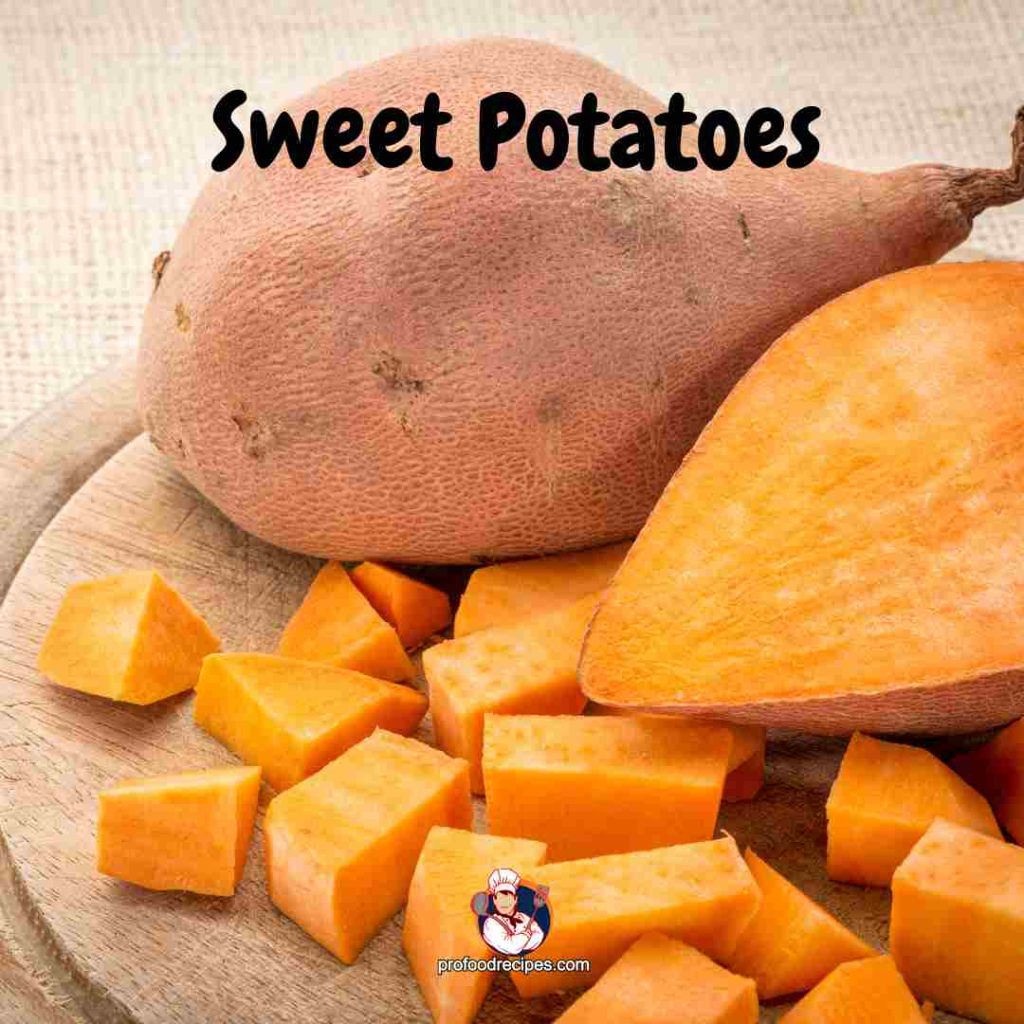
The fiber content of sweet potatoes is very high. It’s a good protein and fiber source and has many healthy nutrients. It improves digestion and protects against cancer and cardiovascular disease. Boxers enjoy the sweet flavor of yam because of its safe health benefits.
However, if you want to add it to your dog’s diet, keep it in moderation because overeating can increase gastrointestinal problems.
Feeding Amount: Both small and adult dogs can consume approximately 1 teaspoon of cooked sweet potato daily.
5. Spinach
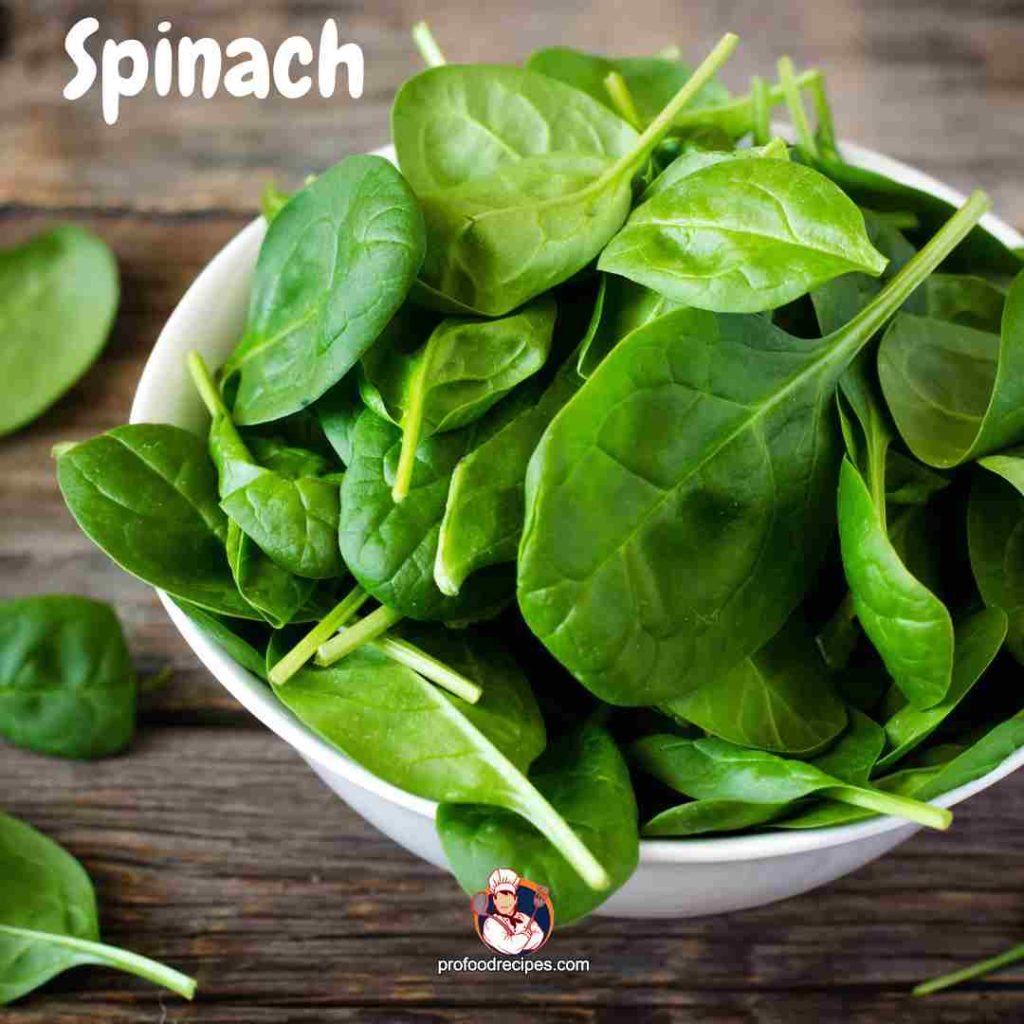
Boxer dogs benefit greatly from eating spinach because of its abundant nutrients. It’s rich in nutrients, including vitamins and minerals. The energy metabolism, muscle and neuron function, and heart rhythm of canines all benefit tremendously from it.
Moreover, this food’s beta-carotene, roughage, and antioxidants all work together to improve the Boxer’s overall health.
Feeding Amount: Moreover, excess calories in dogs might damage their kidneys and hinder them from absorbing calcium. The recommended serving size is 1-3 teaspoons per meal for spinach.
6. Butternut Squash
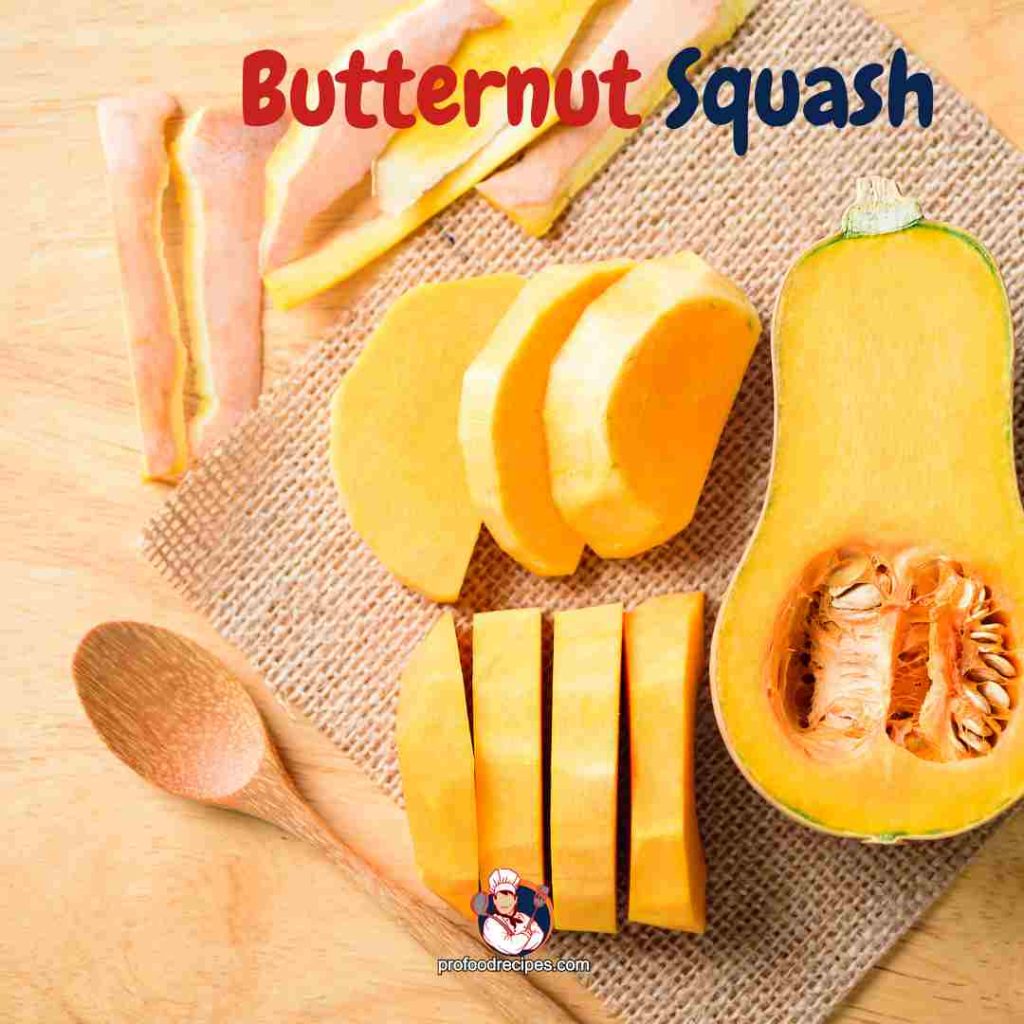
You can compare butternut squash to pumpkins or zucchini. It’s good for boxers because it feeds their bodies and helps them see better and stay healthy.
Boxer dogs can be eaten raw, sliced, cooked, or boiled butternut squash. As a result, feeding them uncooked can cause digestive issues, so it’s best to avoid that.
Feeding Amount: Small dogs should not consume more than a teaspoon or two of butternut squash each day, while medium dogs can have up to two tablespoons, and large dogs can consume even more.
7. Green Beans
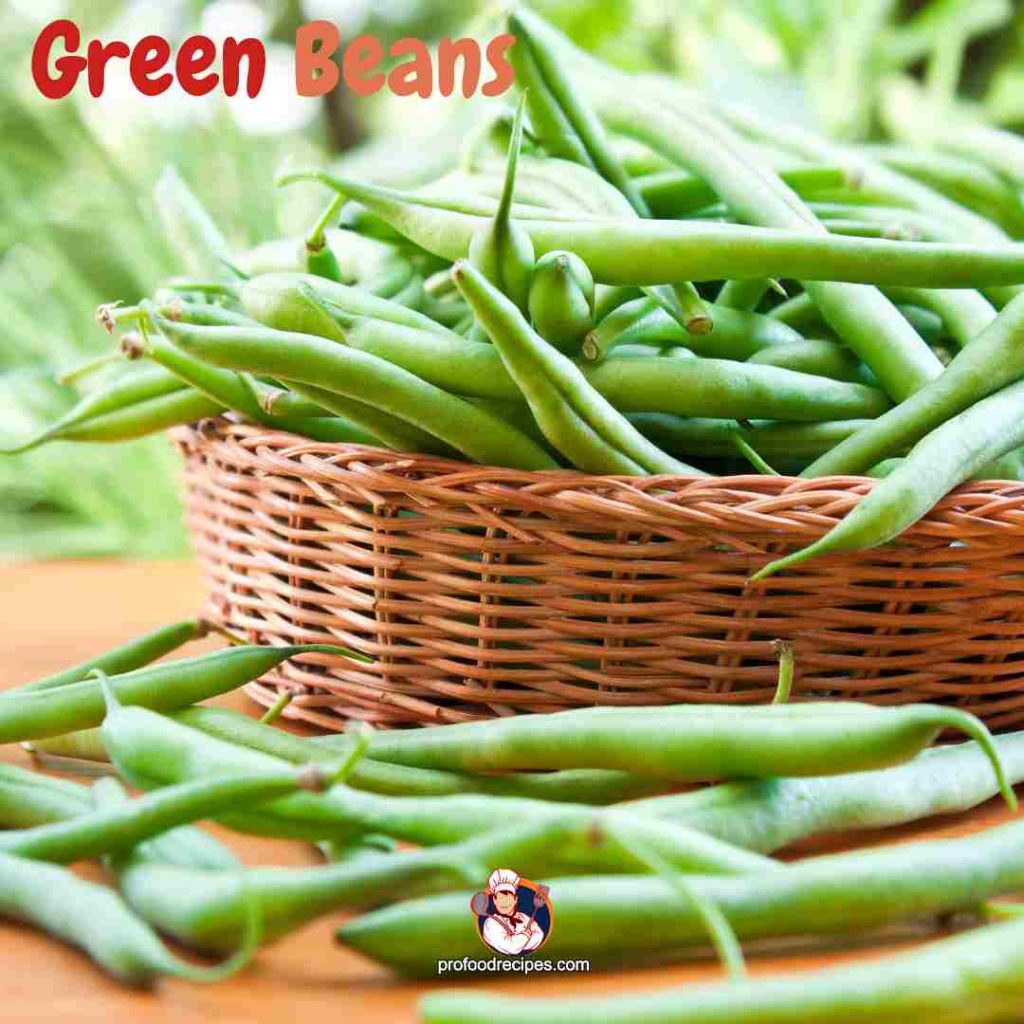
Green beans are a nutritious vegetable that has many health benefits. Veterinary professionals highly recommend it as an essential dietary component for boxers due to its high quality and low risk. An additional benefit is that it can help you provide your dog with a well-rounded diet.
Feeding Amount: You can offer it to boxers, both canned or raw, cut and steamed. Eaten in moderation, green beans can be a healthy treat once in a while.
8. Beets
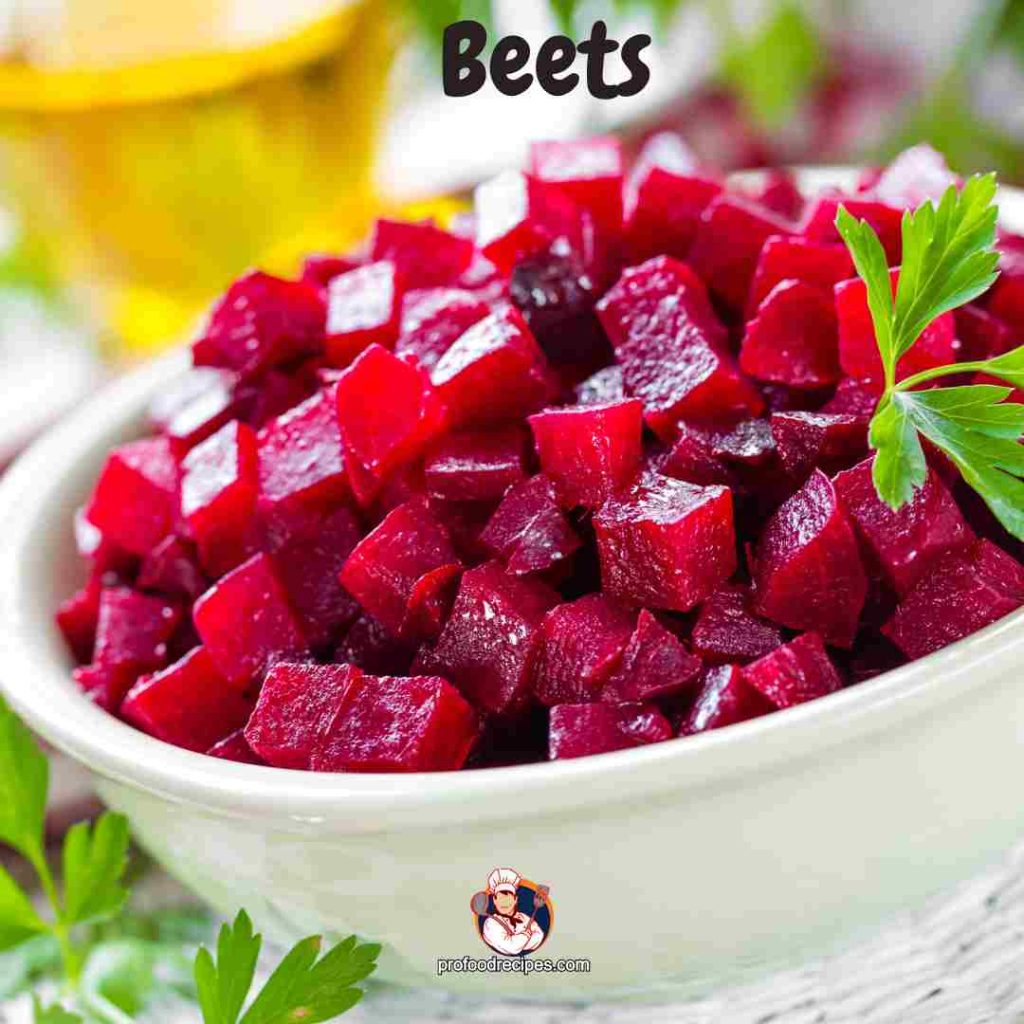
Beets are a nutritious vegetable that makes a great addition to the diet of a boxer dog. It is rich in fiber, potassium, manganese, vitamin C, folate, and vitamin C. Additionally, these micronutrients help Boxer’s digestion and immunological system.
Beets also significantly support the healthy skin and coat of your boxers. It can be served separately, chopped into little pieces, or combined with other ingredients.
Many dogs may have allergic reactions to it, so it’s important to keep an eye on them if you give them.
Feeding Amount: 1 or 2 teaspoons of beet puree can be given to your boxer dog daily.
9. Cucumber

Cucumbers are a great source of anti-aging phytonutrients and have few calories. The digestive health, weight loss, nutrient intake, and dietary regulation of your boxers will all benefit from this. It’s fine to feed them once or twice a day.
Because cucumbers contain high levels of water and fiber, if they consume them in high doses, boxers may experience diarrhea, gastrointestinal problems, and allergies.
Feeding Amount: You should limit your dog’s daily treat intake to 1 or 2 cucumber slices.
10. Broccoli
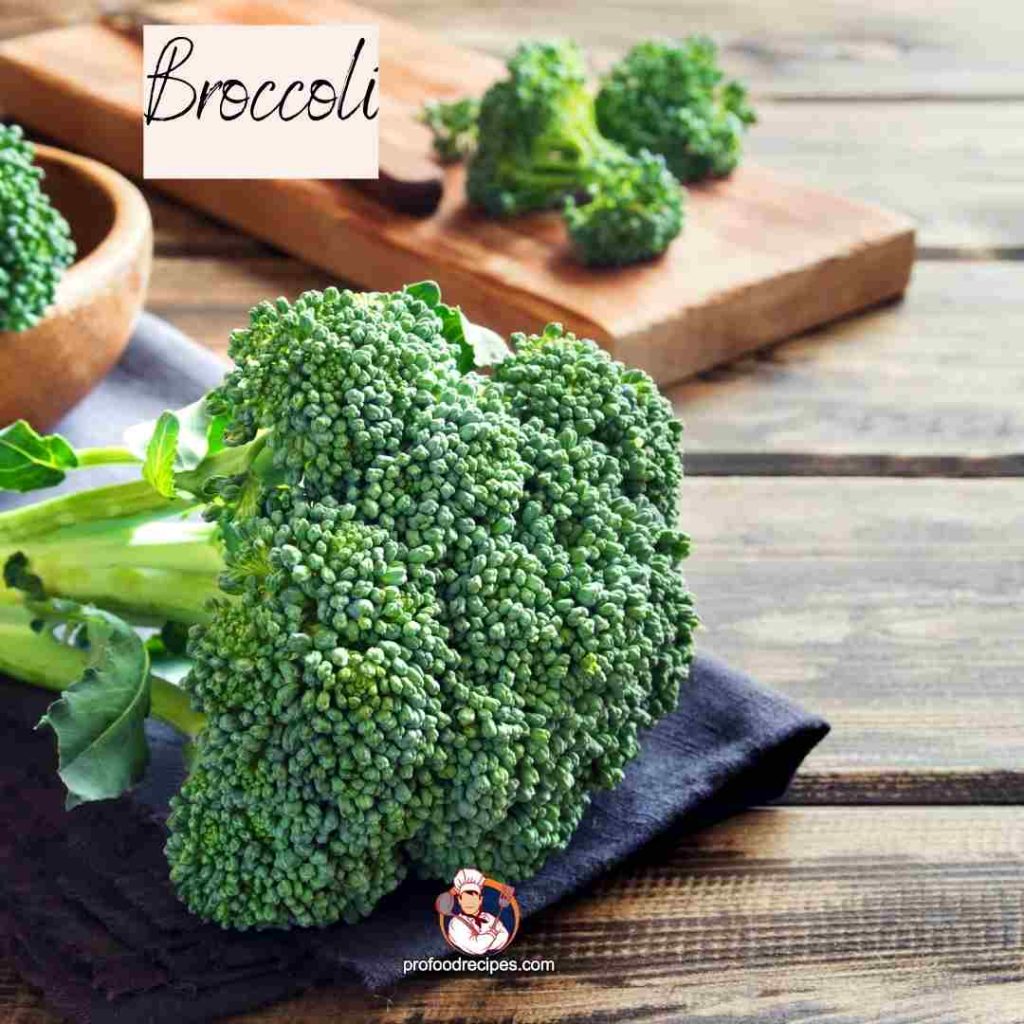
Broccoli is also referred to as wild mustard or wild cabbage. It is a Brassica oleracea derivative. It offers minerals like potassium, vitamin C, and vitamin K. Both cooked and uncooked versions can be given to your boxers. It promotes bone density in your dog, strengthens their bones, guards against illness, and treats heart problems.
Feeding Amount: Give broccoli in moderation to adult dogs because it contains a lot of isocyanates, which, if consumed in large quantities by a dog, can result in indigestion, stomach pain, and gastrointestinal irritation.
Note: Avoid feeding your dog more than 25 percent vegetables, even though they are healthy. Less than 15 percent, for instance, is the limit for all of our recipes. Vegetables should not account for more than 10 percent of your dog's daily calorie intake because a varied diet is essential for optimal health and well-being in pets. Consuming excessive veggies can lead to problems, including altered intestinal flora and elevated alkalinity that can damage the kidneys.
Read More:
How Often Should You Feed Your Boxer?
When planning a dog’s diet, it’s important to keep a few things about boxers in mind. Boxers must eat a nutritious, balanced diet for their physical fitness and nutrition. It can ease the thought of the best food for boxers, how much, and when to feed them.
A senior and adult Boxer is fed twice a day, and Boxer puppies are four times a day. But in many cases, they may eat more than the food limit based on their physical activity and health.
If you want your boxers to stay healthy, though, you’ll need to stick to a strict diet, make sure they stay at a healthy weight and prevent them from binge eating. Their dietary needs can be met by following this plan. Some sample Boxers meal plans and descriptions follow:
Boxer Dog Feeding Chart by Age: How Much to Feed Your Boxer
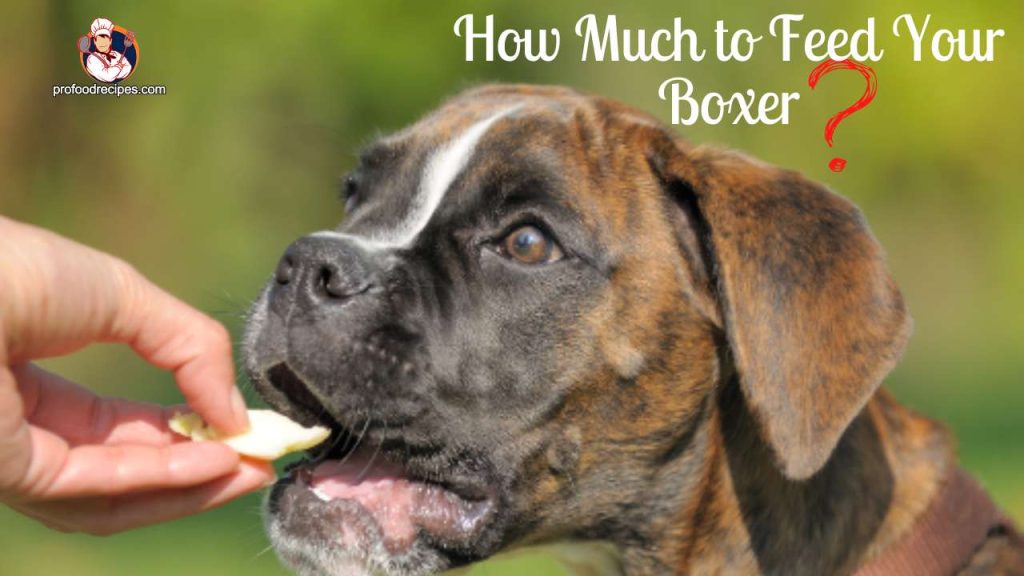
Determining a proper diet depends on the type of food boxers eat. Because a boxer’s weight, height, age, and overall daily activity level will all impact how much food they need to maintain their physical activity.
A boxer adult dog and a puppy both have variations in their nutrition because Boxer puppies need adequate amounts of nutrients, calories, and vitamins from vegetables and meat to maintain bone development and coat health, and more than adults.
However, it would help if you adjusted their diet according to their needs and the vet’s advice.
Boxer Puppy Feeding Chart (2 to 12 Months)
The health of boxer puppies depends on the amount of food, age, and weight. A puppy weans itself from its mother’s milk during the first 2 to 3 weeks of life. Then for six weeks, they are completely free from liquid food and provided with high calories and fat to help them grow into healthy bodies. So I’ve given a chart below that will help you know how much food your puppies need:
| Age (Months) | Daily Food Quantity(Cups) | Fats % (Percentage) | Protein % (Percentage) | Kilocalories ( Per day ) |
| 2 to 3 | 2.63 to 3.75 | 5 to 8 % | 22 to 26 % | 288 to 397 |
| 4 to 5 | 3.5 to 4.56 | 5 to 8 % | 22 to 26 % | 489 to 567 |
| 6 to 9 | 3.75 to 4.88 | 5 to 8 % | 22 to 26 % | 656 to 833 |
| 10 to 12 | 5.13 to 5.38 | 5 to 8 % | 22 to 26 % | 850 to 867 |
However, you should follow the recommendations on commercial dog food labels when choosing how much to feed your puppy.
Adult Boxer Feeding Chart (1 to 6 Years)
An adult boxer needs to increase the protein content in his diet for high performance. Because boxers take longer to reach full size than smaller dog breeds, and then they need to provide 4 to 6 cups of food in the first to six years to enable them to consume 1350 kcal per day.
A mature dog needs a portion of protein twice a day. But you feeding them too much protein can cause problems like kidney disease and weight gain. Moreover, I have provided a chart below to help you know how much food you should feed your adult boxers:
| Age | Daily Food Quantity(Cups) | Fats % (Percentage) | Protein %(Percentage) | Kilocalories ( Per day ) |
| 1 to 6 | 4 to 6 | 8 | 26 | 940 to 1350 |
Senior Boxer Feeding Chart (7 Years and Above)
Boxers 7 years and older are typically less active than their prime boxers. Because of this, they may have difficulty digesting fat, which limits the number of calories they absorb. So senior boxers should be fed grain-free kibble and low-fat foods because oversupplying them can damage their joints and bones. That’s why you can choose some essential nutritious foods for your boxers that will help keep them healthy and strong. For that, I have provided a senior boxers chart below, which will help you:
| Age | Daily Food Quantity(Cups) | Fats % (Percentage) | Protein %(Percentage) | Kilocalories ( Per day ) |
| 7 years and up | 4 to 5 | 5 | 20 | 940 to 1150 |
Optimal Feeding Times for Boxer Dogs
Choosing when to feed a Boxer is just as important as choosing how much and how often to feed it. With a diet like this, you can ensure that your boxers are getting the energy and nutrition they need to perform at their best. Many boxers need three square meals plus snacks each day to bulk up; therefore, you may feed them with an interval of several hours between meals, dependent on their age.
Also, many adults have two meals in their diet, morning and evening. However, I have provided a chart below that shows the best feeding schedule based on the Boxer’s age:
| Age | Optimal Feeding Times |
| 2 to 3 months | 7:00 am; 11:00 am; 3:00 pm; 7:00 pm (Snacks are provided all day long) |
| 4 to 12 months | 7:00 am; 1:00 pm; 7:00 pm (Snacks are provided all day long) |
| 1 to 6 years | 7:00 am or 8:00 am and 6:00 pm or 7:00 pm (Providing small snacks in between meals) |
| 7 years and above | 7:00 am or 8:00 am and 6:00 pm or 7:00 pm (Providing small snacks in between meals) |
Final Verdict
Vegetable treats are a good option if you’re thinking about bringing a Boxer dog into your house and want to provide them with nutritious eating. Then pick veggies that promote healthy digestion and sustained activity. What Vegetables Can Boxer Dogs Eat? are discussed above. I hope that this will assist you in giving your boxer dogs healthy vegetables.
You May Also Like to Read:
- Can Dogs Eat Zucchini?
- How Much Should a German Shepherd Eat a Day?
- Can an Adult Dog Eat Puppy Food?
- DIY Homemade Dog Food Recipes Vet Approved
- What Foods Are German Shepherds Allergic to?


Great insights, thanks! Your ‘What Vegetables Can Boxer Dogs Eat’ blog is a lifesaver. Clear, concise, and super helpful for a Boxer owner like me. Kudos for the valuable information – you’ve made navigating my pup’s diet a breeze!